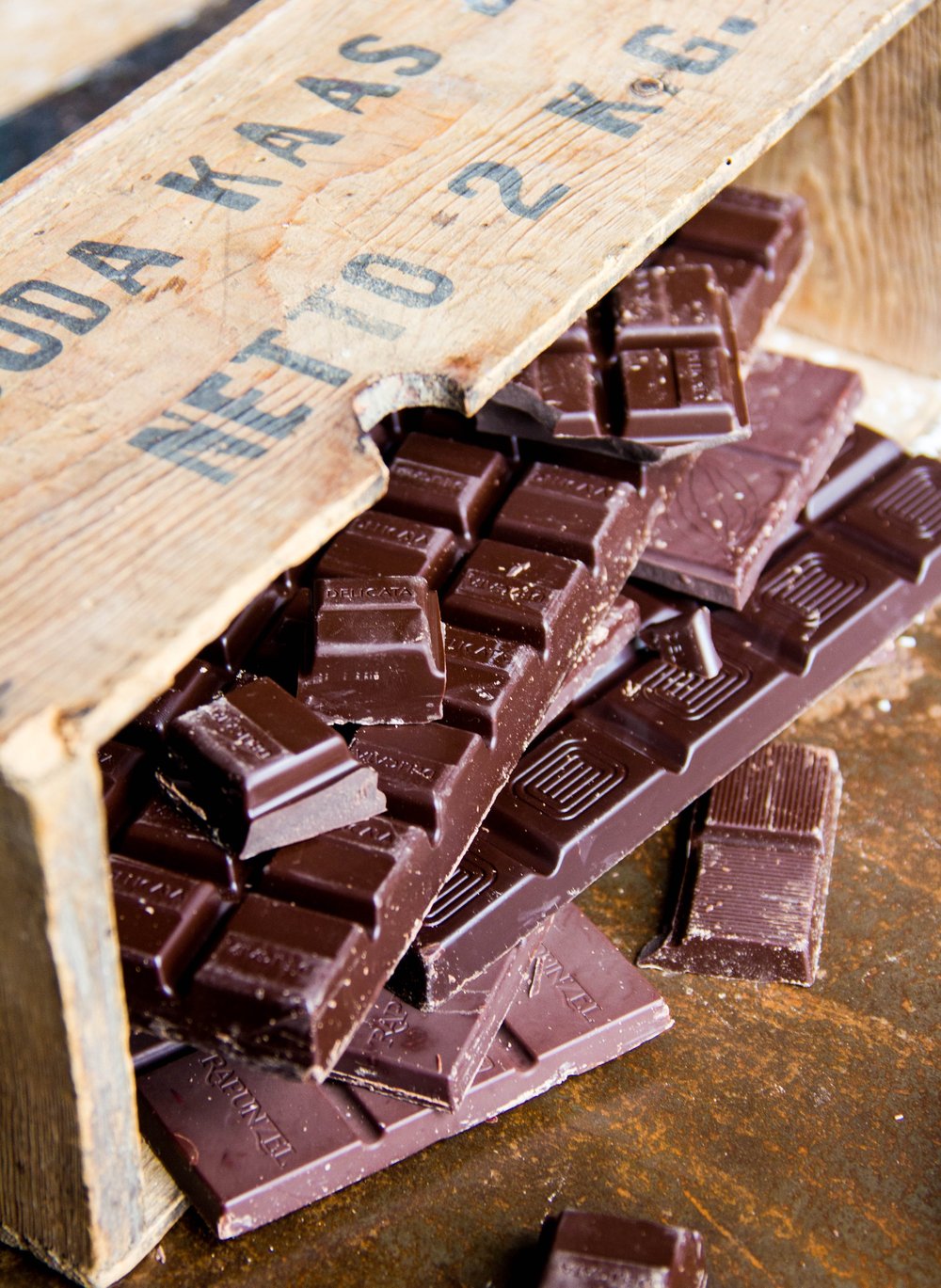
When we talk about storing and preserving foods, the first factor that typically comes to mind is temperature. While temp is absolutely a critical component in proper storage conditions (if not the most important), it's certainly not the only one.
Another important aspect of storage that often gets overlooked is humidity. Humidity doesn't impact the same number of foods as temperature -- for example, big boxes in a freezer or pre-packaged deli meats in a cooler won't respond to humidity levels -- but there are certainly a handful of important foods that are.
We already talked about dry age storage for meats. This is definitely one of the most important (and popular) applications for humidity control, but there are others. Let's take a look at four foods that need the right levels of humidity for proper storage.
CHOCOLATE
Chocolate is delicate. The problem with chocolate, though, is there are so many types of chocolate with varying levels of fat. White chocolate has more cocoa butter than a bitter, dark chocolate.
Regardless, chocolate needs to be stored in lower humidity levels, typically less than 55 percent. With moisture comes sugar blooms, and fine chocolatiers avoid this white discoloration by keeping humidity levels in check.
CHEESE
There's a reason cheese has been stored in caves for centuries. Caves are usually cool and have a constant humidity by nature. There's also a reason certain types of cheeses emerge from certain cave locations. Different cheeses require different levels of humidity.
Cheeses in the cheddar family should be stored at relative humidity levels under 80 percent, while traditional Swiss type cheeses like Emmenthaler can be slightly higher between 85 and 90 percent humidity. Semi hard cheese like Havarti should be kept at a relative humidity of 90 percent, though humidity levels should be kept lower during the fermenting and ripening process. Gouda? It's good 75 percent to develop its final characteristics. The bottom line is check on the types of cheeses you'll be storing.
WINE
Ok, so the next one here isn't exactly a food, but humidity levels are important to wines, as well. Like cheese, wine is also often stored in caves or underground cellars, which also have consistent humidity levels.
Why do bottles of wine need certain humidity levels? Simple. The corks. In fact, if the wines you're cellaring are all twist tops, the humidity levels don't matter at all, but if they contain corks, the recommended humidity level is 70 percent.
CAKES
Wedding cakes, bundt cakes, birthday cakes -- they all should be stored properly in order to maintain ideal conditions in the short periods they're stored. In reality, there are different aspects of a cake that can react to humidity, as well.
Too much humidity in the actual cake part of the cake can cause it to go bad quicker, while too little humidity can cause the cake to dry out. Likewise, fondant is sensitive to humidity. The best suggestions for storing cakes are cool, dry locations.
How can operations control humidity levels?
RDT's Environmental Controller can control humidity levels as needed, regardless of what's being stored or what the desired humidity levels might be. The Environmental Controller also contains many of the same operational benefits as RDT's Eco-Smart system, mainly the ability to provide efficiency control and convey important communications. With HACCP reporting and alerts, operators will know and have the ability to report on the conditions of their storage facilities.




